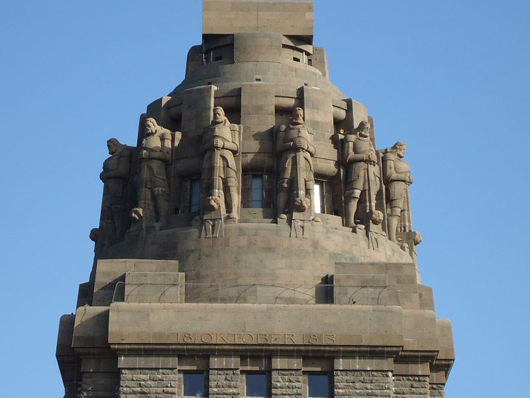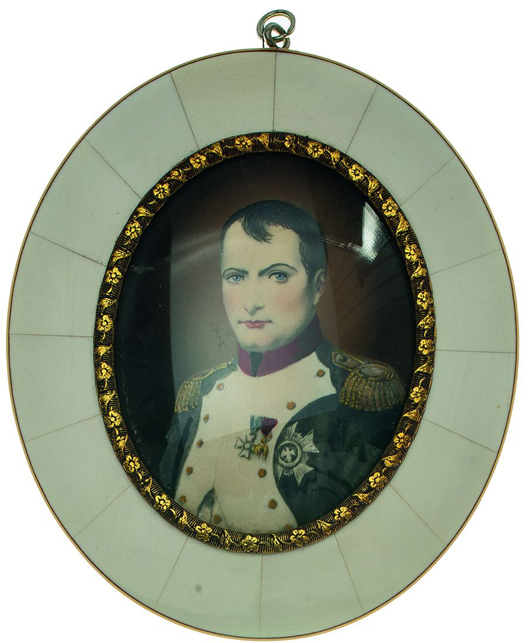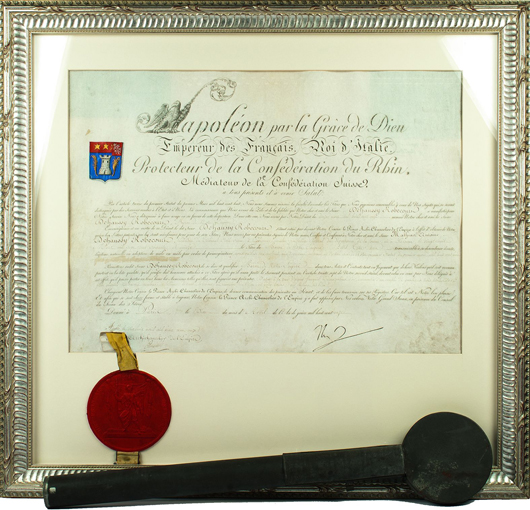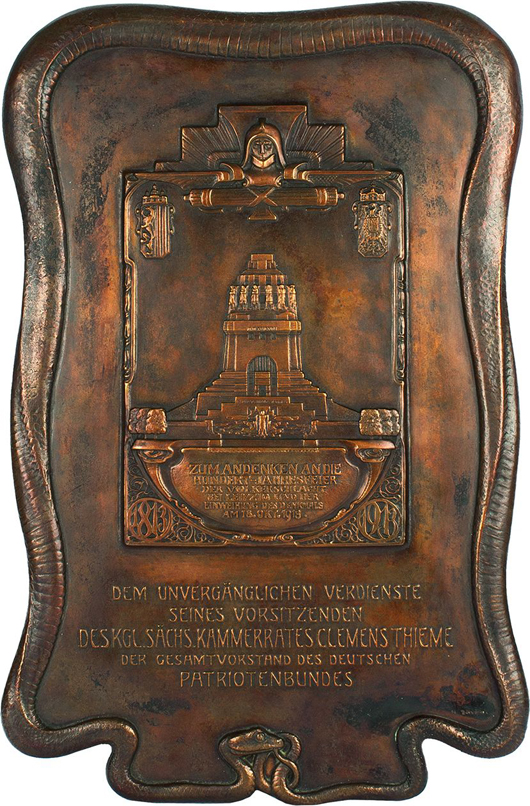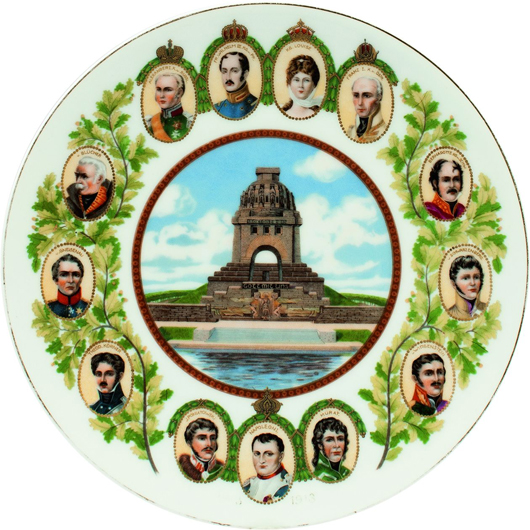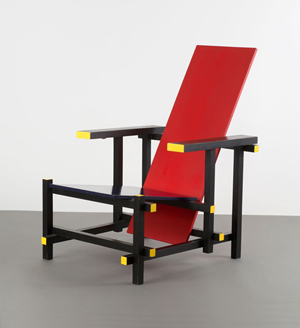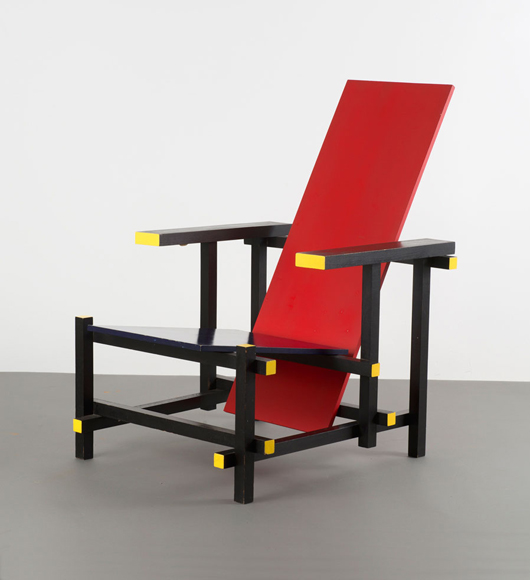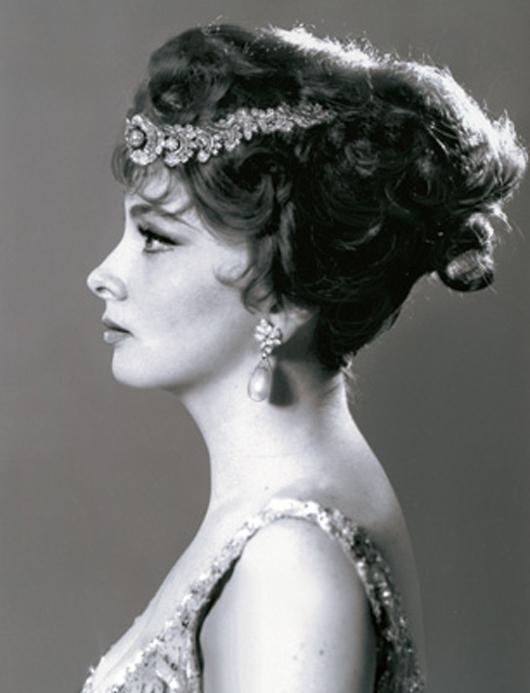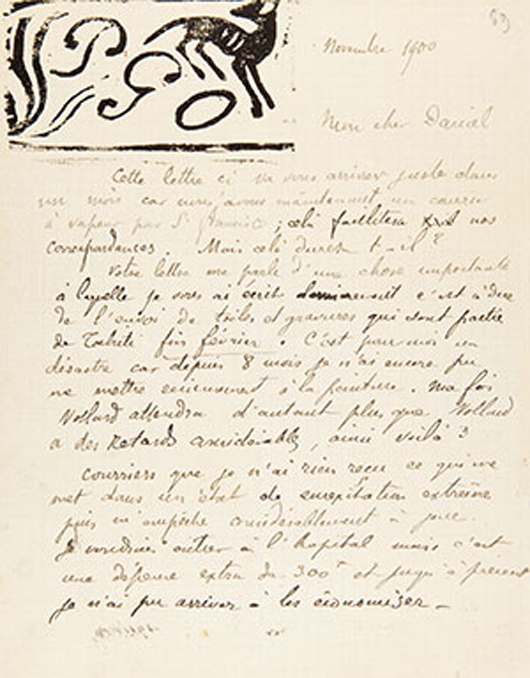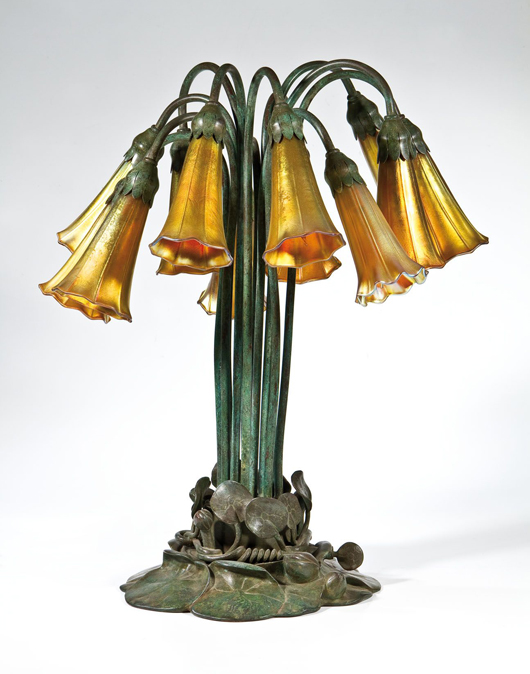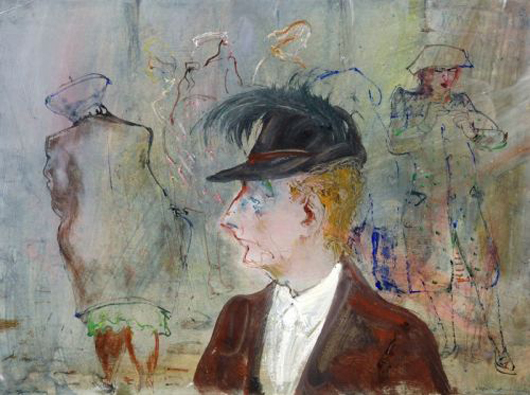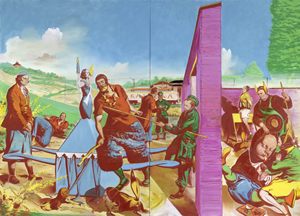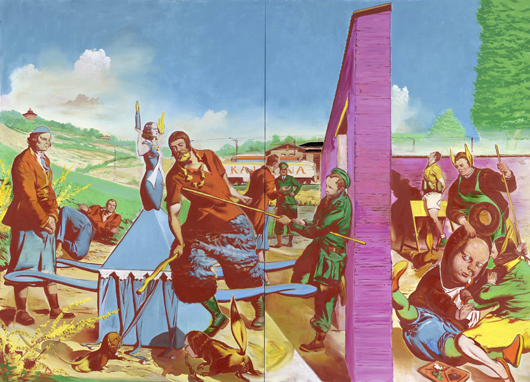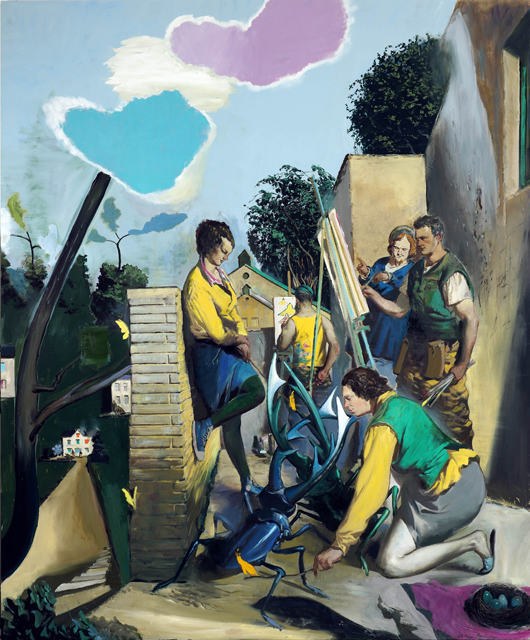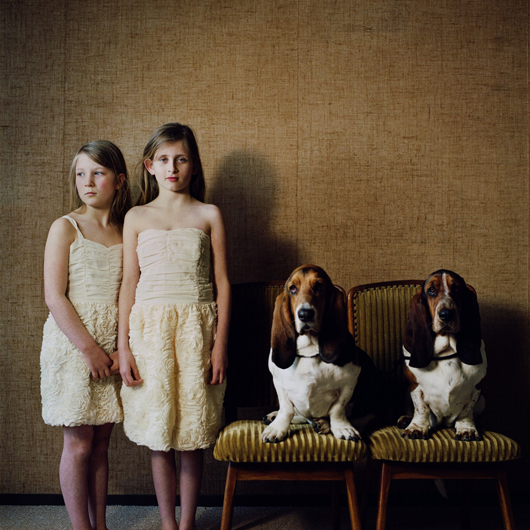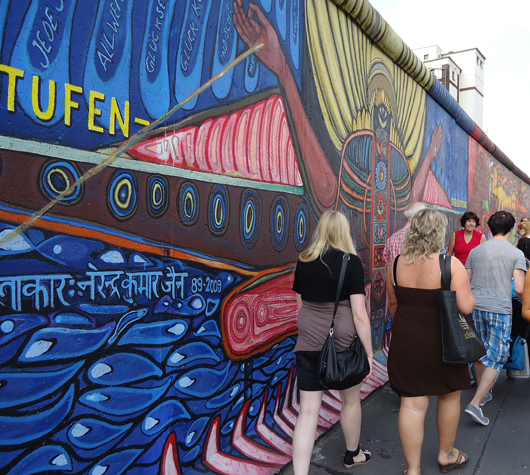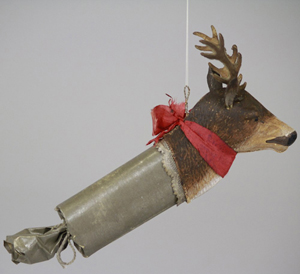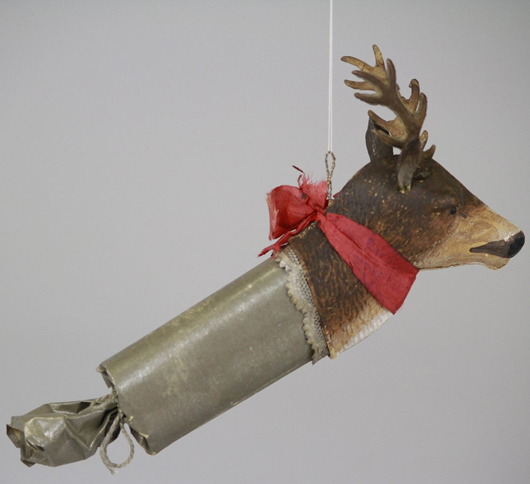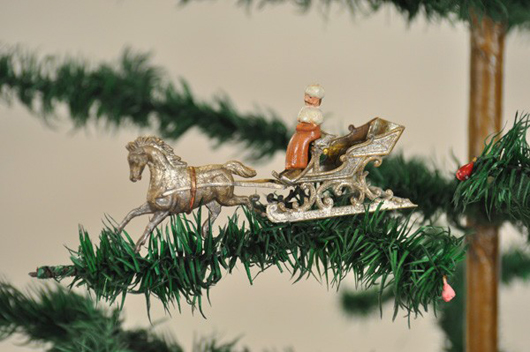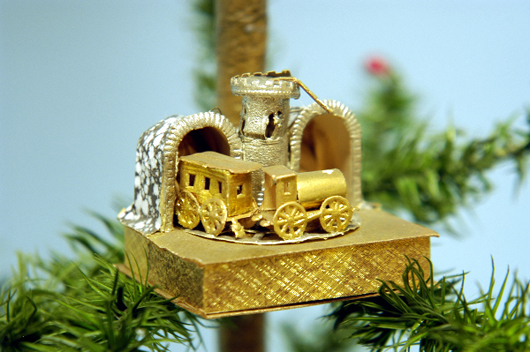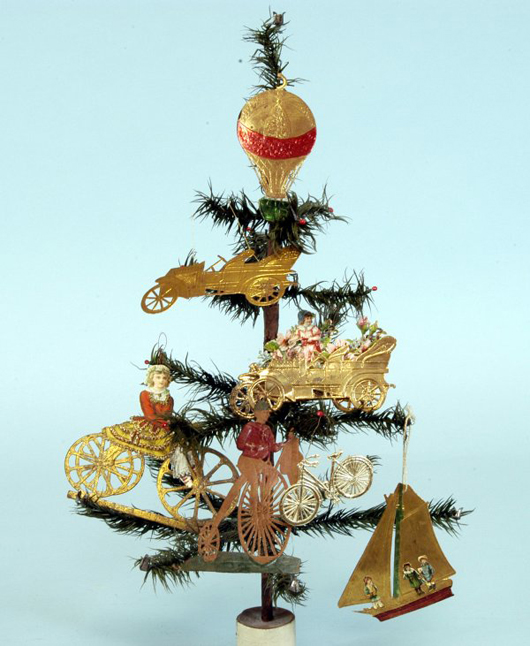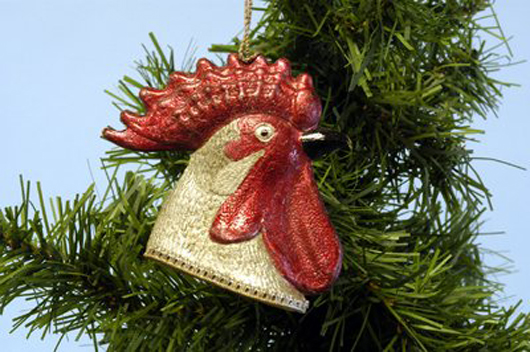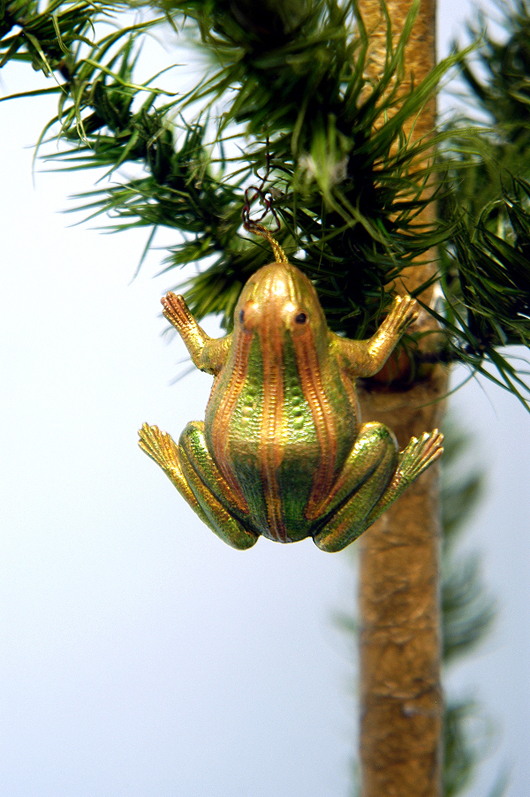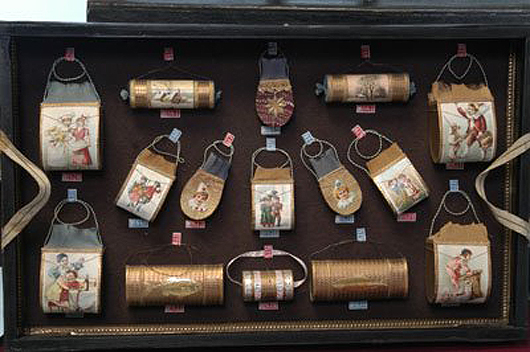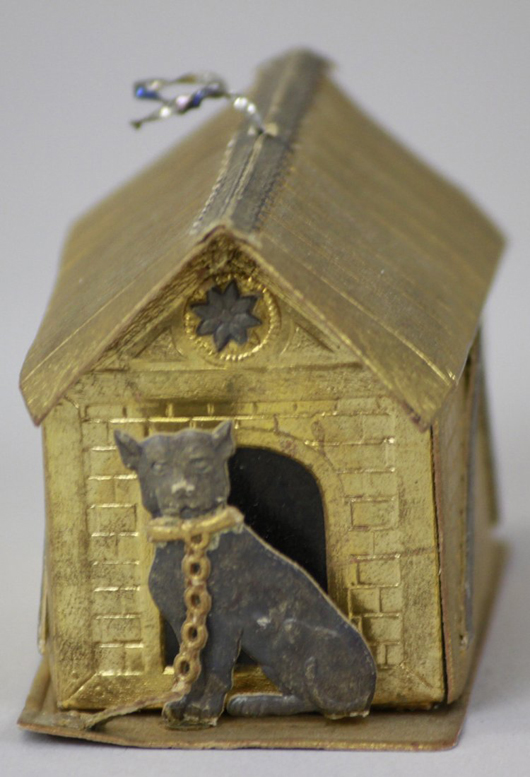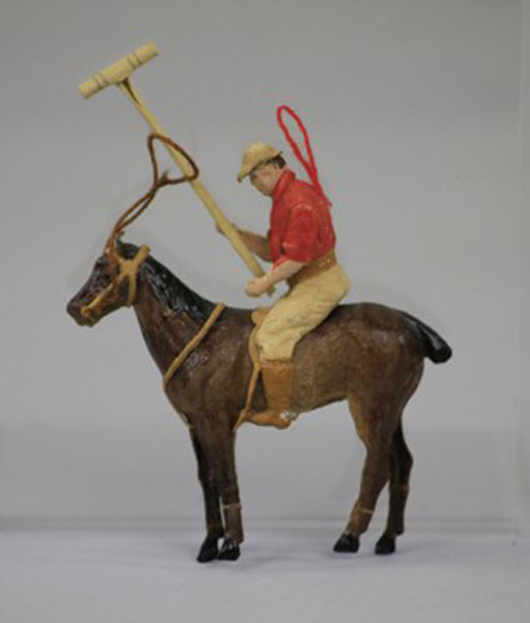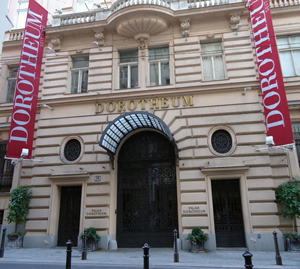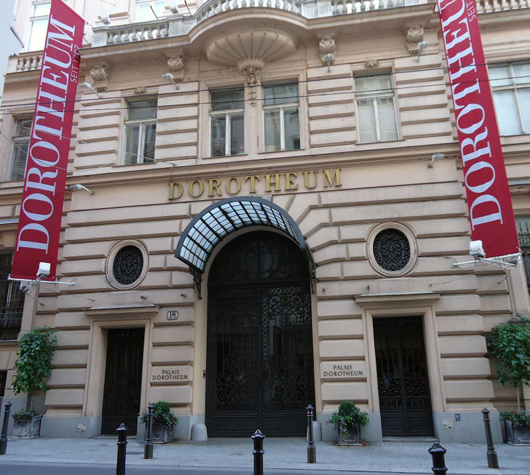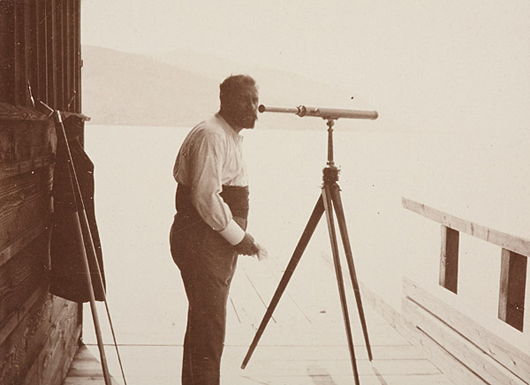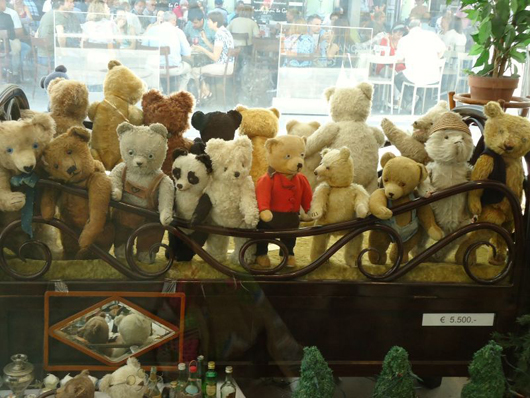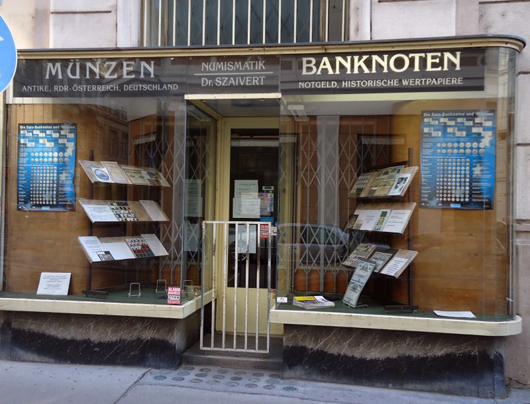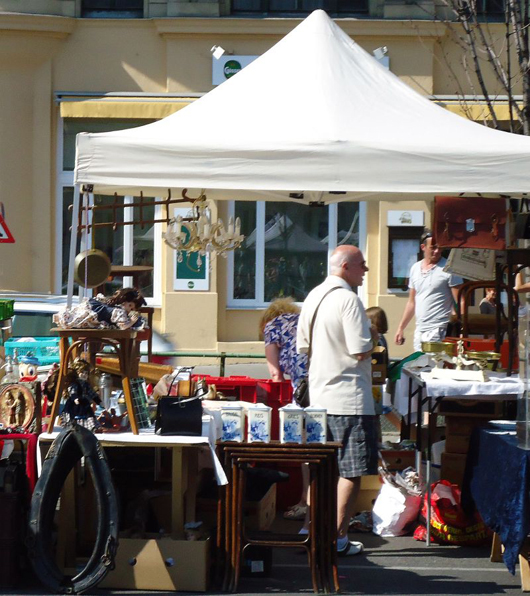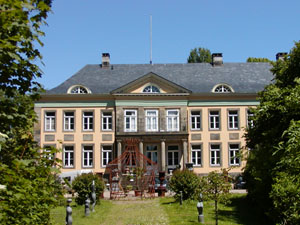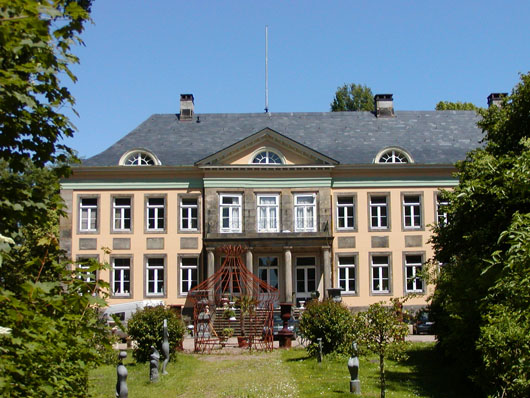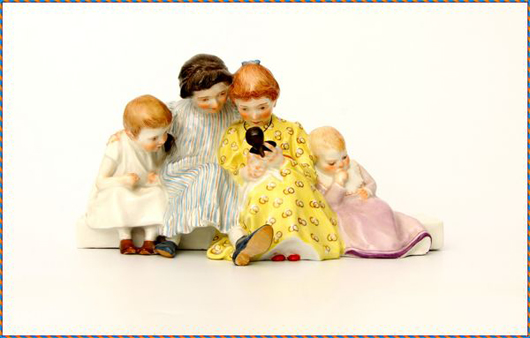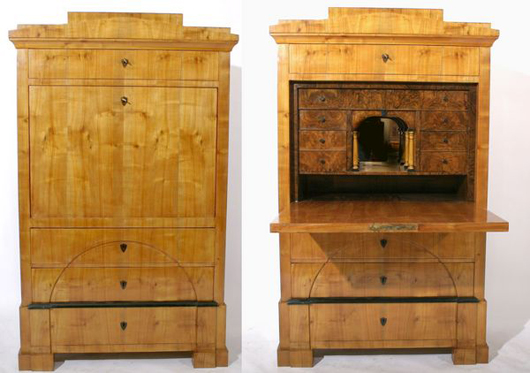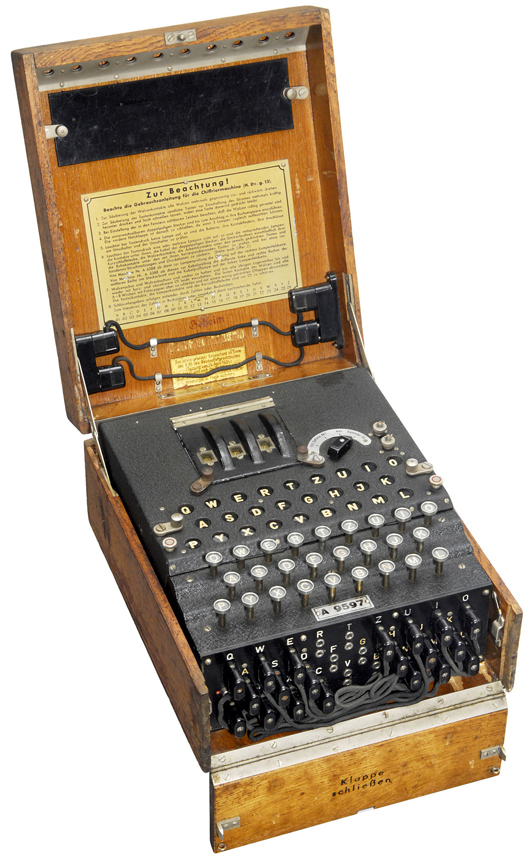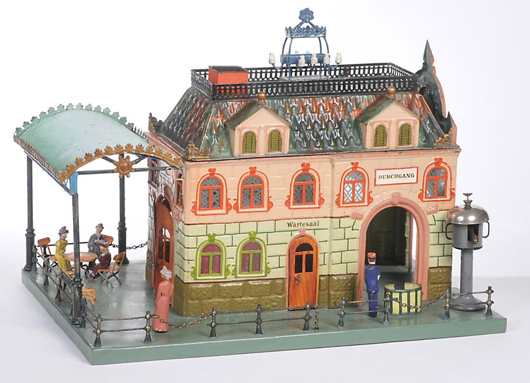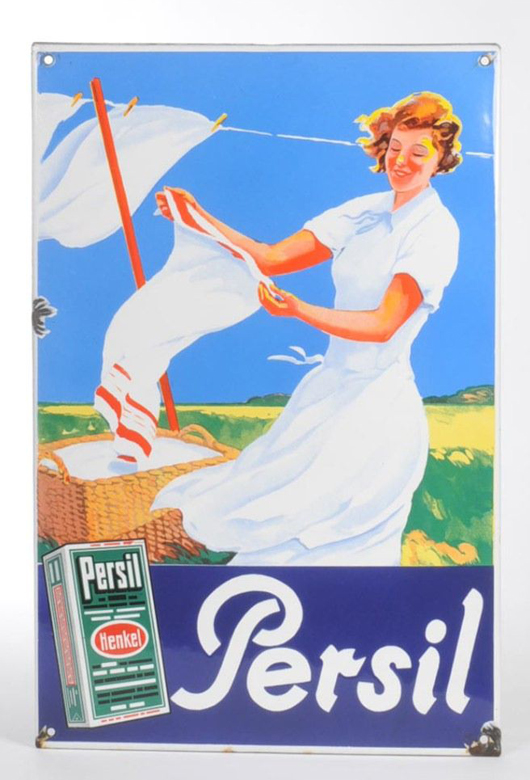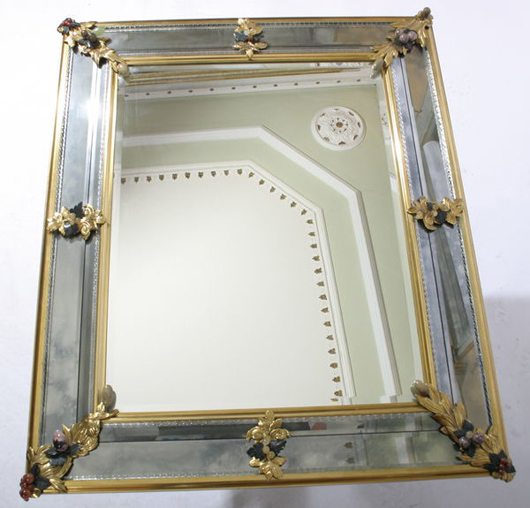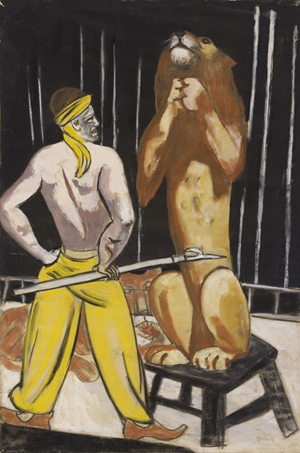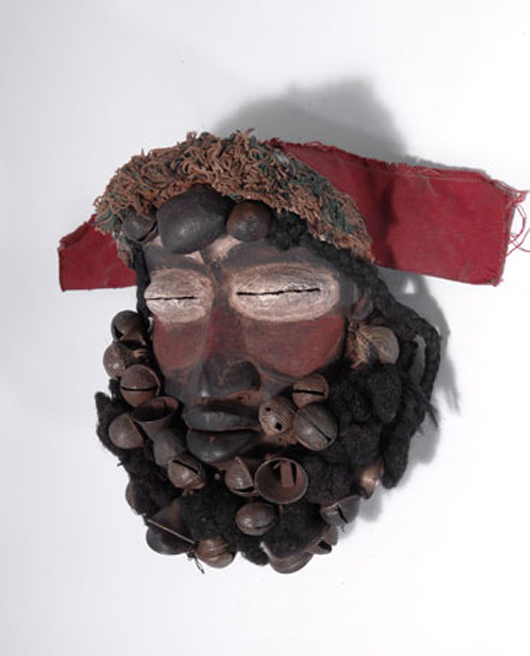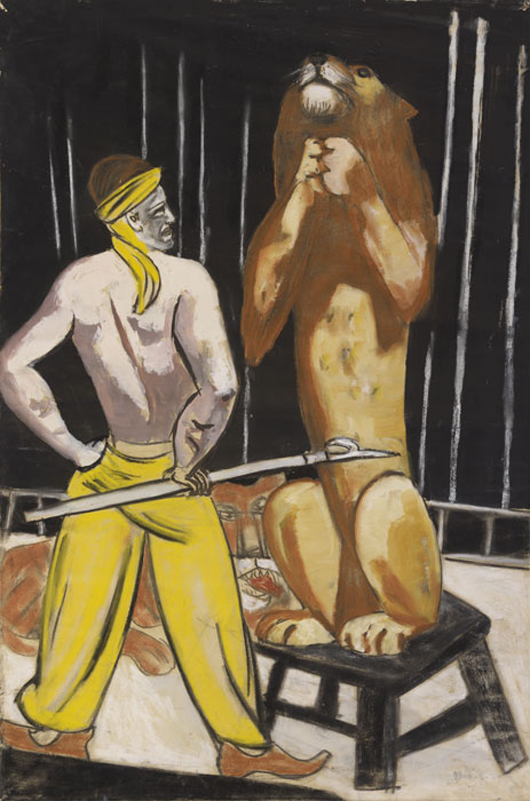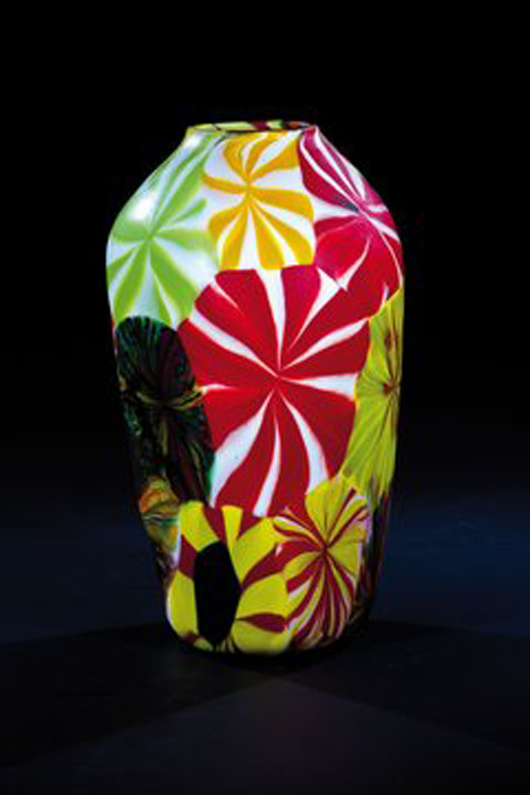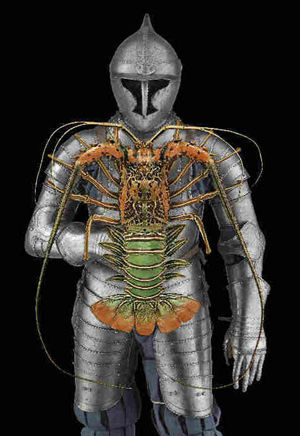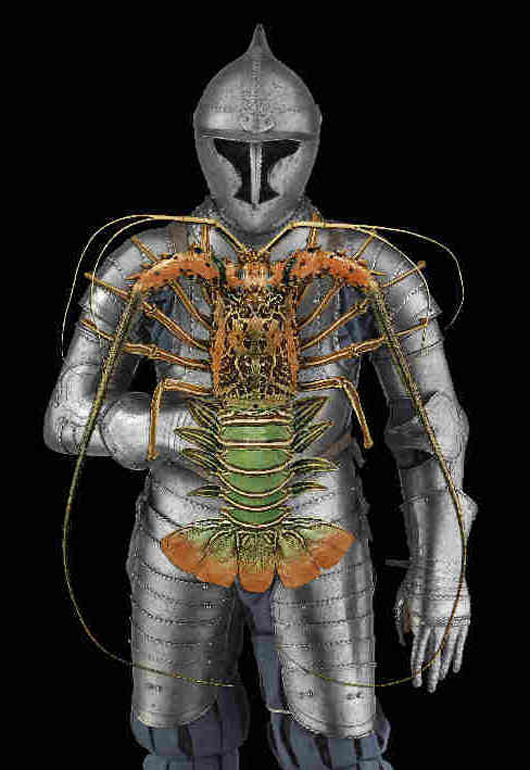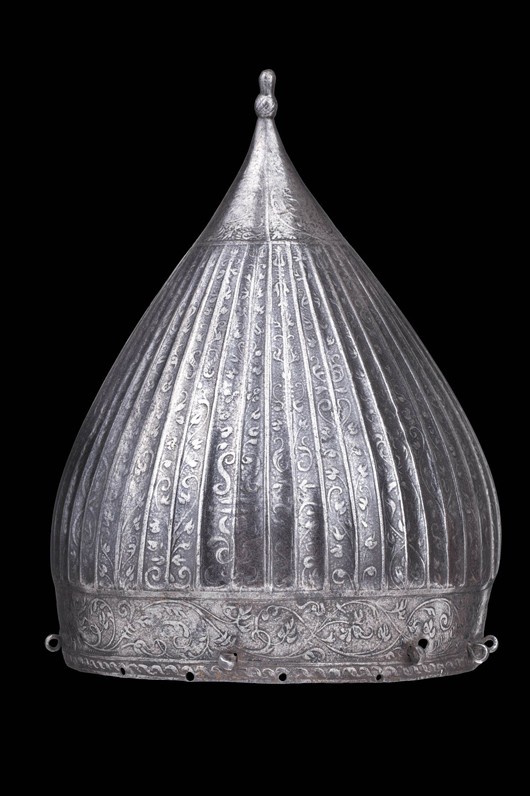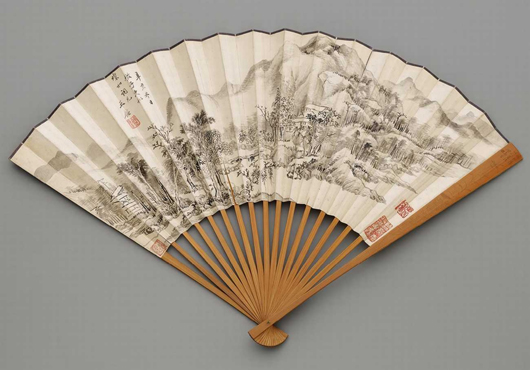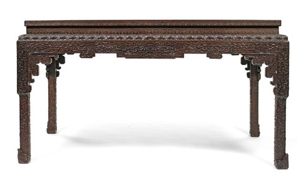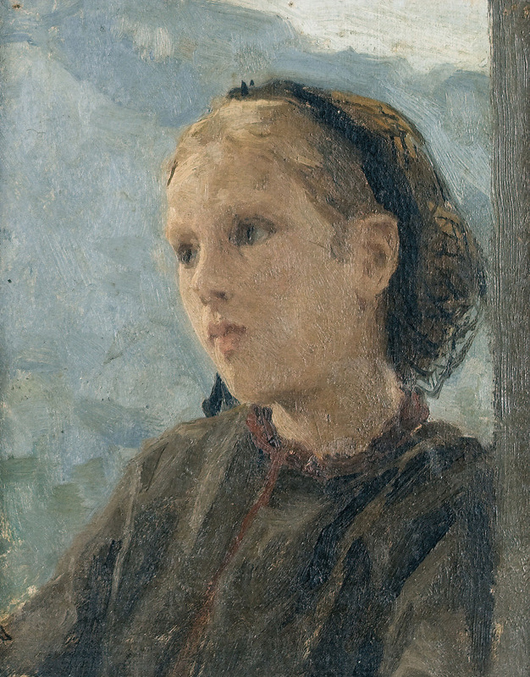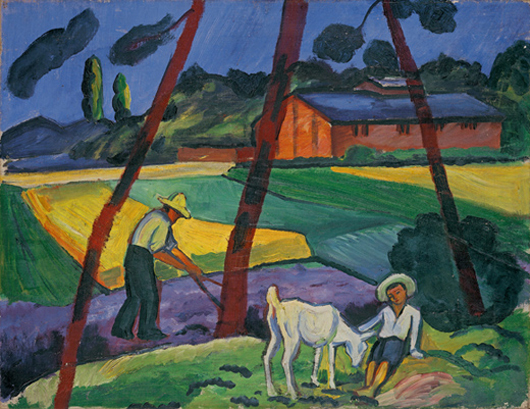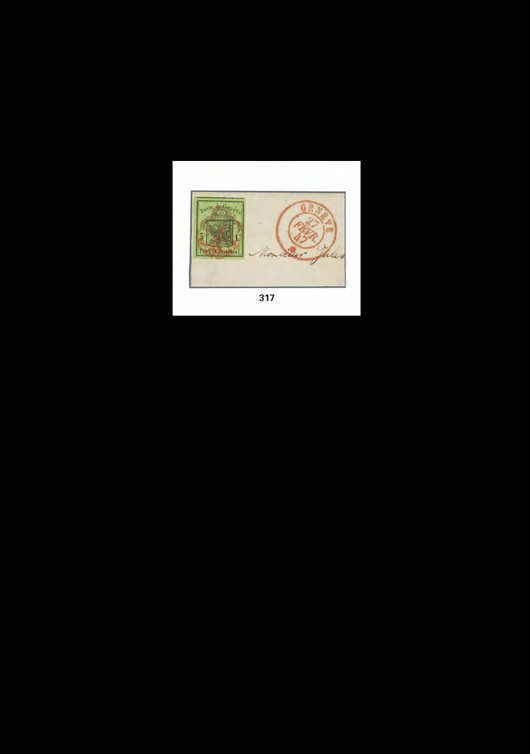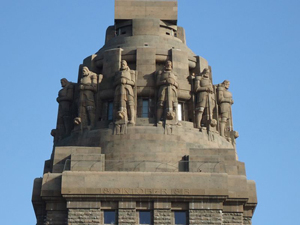
LEIPZIG, Germany – All of Leipzig is marking a double anniversary on Oct. 8. Two hundred years ago, Napoleon’s forces were trounced by the Army of Nations in a fierce battle just outside the city. One hundred years later, the massive pyramid-shaped memorial known as the Völkerschlactdenkmal or Monument to the Battle of Nations, was opened.
Already in 1814, there was a call to create a monument to mark this massive loss of life. Plans were drawn up by architect Friedrich Weinbrenner, but sat unused. On the 50th anniversary of the battle in 1863, a foundation stone was laid.
Architect Clemens Theime took a special interest in this unfinished project. In 1894 he formed the Deutsche Patriotenbund (Association of German Patriots) and campaigned vigorously for funds through private donations and a lottery. He chose as his site the slight hillside where Napoleon announced his retreat, and keeping Weinbrenner’s pyramid form, created the present Völkerschlactdenkmal.
The granite-faced concrete building is a masterwork of the Wilhelmina style. Colossal sculpted soldiers solemnly watch over all who enter and exit. The interior is dark, and silent as a tomb.
Since its appearance on the Leipzig skyline, the Völkerschlactdenkmal has been reproduced on everything from ceramic souvenir cow creamers to canned goods, jewelry to cigars. While its 100th anniversary has inspired a novel, a cabaret performance, and special exhibits, Leipziger Münzhandlung und Auktion Heidrun Höhn found some very special pieces of memorabilia for their Sept. 13-14 auction.
“There is only one of these,” said Christine Höhn as she pointed to lot 610, a large bronze medallion of the Völkerschlactdenkmal, designed in 1913 by Hermann Schöne and presented to Clemens Thieme by the Deutschen Patriotbund. The Jugendstil plaque hung outside the architect’s house in Leipzig for many years.
While the auction features many coins and medallions with various portraits of Napoleon, perhaps one of the most delicate and intriguing is found in lot 652, a pair of ivory-framed miniatures of Napoleon and Josephine. Related ephemera in the auction include a Leipzig newspaper with an account of the battle from 1813, and even Napoleon’s signature on a certificate bequeathing the title “Baron.”
For more information on events surrounding the Völkerschlactdenkmal anniversary, or its opening hours, visit www.Stadtgeschichtles-Museum-Leipzig.de
Lempertz’s Hanstein Appointed President
The European Federation of Auctioneers voted Henrik Hanstein of Brussels, president; Sonia Farsetti of Florence, Italy, and Jean Pierre Osenat of Paris were elected vice presidents.
Hanstein, director of Art Auctionhouse Lempertz, Brussels and Cologne, has engaged himself in successfully harmonizing the resale right (subsequent decisions) within Europe. It is the first time that a German has held this office. The EFA represents the interest of European auctioneers before the European Commission and the European Parliament.
Upcoming Shows and Auctions
Sept. 24: Quittenbaums, Munich, design and art after 1945. www.Quittenbaum.de
Sept. 24-25: Gerhard Hirsch Nachf., Munich, antiques auction featuring objects of glass, ceramic and metal; their coin auction follows on Sept. 25-26. www.Coinhirsch.de
Oct. 4-5: A four-part sale of jewelry and watches; Asian, African and non-European art; handcrafts, antiques and paintings; as well as modern and contemporary art at Auktionshaus Kaupp, in Sulzburg. www.Kaupp.de
Oct. 11-12: Peter Kiefer Kunst und Buch Auktionen, Pforzheim. www.Kiefer.de
Oct. 12: Antique art, advertising art and modern works at the Lempertz auction in Berlin. They are also hosting two benefit auctions on Oct. 20 and Nov. 15. See www.Lempertz.com for details.
Oct. 12: Dr. Fischer Kunstauktionen, Heilbronn, offers European Glass and Studio Glass, as well as a private collection of Jugendstil and Art Deco objects. www.Auctions-Fischer.de
Oct. 18-19: Autumn stamp auction at Schwarzenbach Auktion, Zurich. www.Schwarzenbach-Auktion.ch
Nov. 6-9: Dobiachovsky, Bern, hosts their autumn art auction. www.Dobiaschovsky.com
Nov. 27-30: A widely varied auction of classical and contemporary art and photography at Villa Grisebach, Berlin. www.Villa-Grisebach.de
Nov. 28-30: Bassenge in Berlin-Grunewald offers art from the 15th to 19th centuries, as well as modern and contemporary art. www.Bassenge.com
Dec. 1: Antique and flea market with a special focus on Christmas decorations at Gießener Hessenhallen from 8 a.m. to 3 p.m.
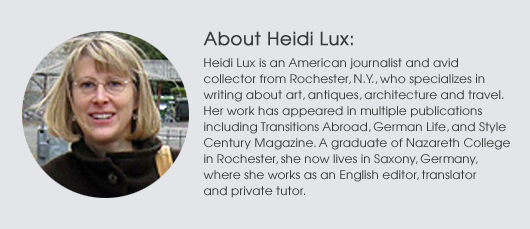
ADDITIONAL IMAGES OF NOTE
